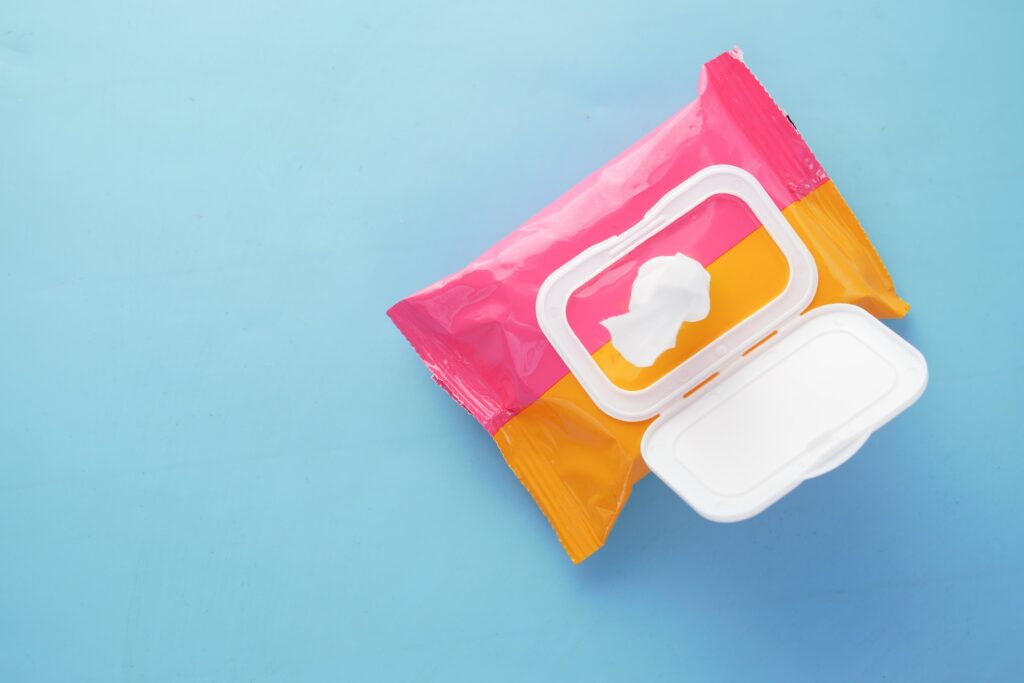If you’re a dog owner, you’ve probably noticed that your furry friend’s nails can come in various colors. But what does it mean when you see your dogs nails turning black?
Black nails may indicate a variety of underlying issues and infections. Injuries and nutritional deficiencies are other common causes. You need to know how to recognize and help your dog in these situations.
- What is the anatomy of a dog’s nails?
- What causes a dog’s nails to turn black?
- What treatment options are available for blackened dog nails?
- How to prevent your dog’s nails from turning black?
What is the anatomy of a dog’s nails?
A dog’s nail is composed of a nail bed, which is the tissue below the nail. The nail matrix is the base where new cells are constantly being produced. A bit above the matrix is the cuticle which protects it. The nail plate is the hard, visible thing people usually describe as the nail itself.
Inside the nail plate is the quick. This is a reddish tissue composed of blood vessels and nerves. This is the most sensitive part and owners should be very careful not to clip it while cutting their dog’s nails. The portion that should be clipped is called the nail clipping.
What causes a dog’s nails to turn black?
Dogs can have different nail colors based on their genetics. Some dogs naturally have black nails, or melanonychia, while others have white or clear nails. The nail pigment in dogs is called melanin, and it is also responsible for its skin and hair color. There may be other causes of black nails in dogs though.
Injuries
When your dog digs excessively or hurts itself in any way, it may cause damage to its nails. Once damaged, the nail will first turn red due to the blood coming into the spot. Then, as the hemoglobin from the blood breaks up, the nails will slowly become darker.
Damage to the nails also happens due to people clipping them too often. Dewclaw injuries can also be a cause of discolored nails. Sometimes a nail will completely detach or get ripped from the nail bed. Because it won’t get enough blood to thrive, it will change its color to black and then fall off.
Infections
One of the black dog nails causes is bacterial and fungal infections. These infections may occur when moisture gets trapped under the nail, providing a breeding ground for fungi. Dogs can pick up these infections by walking around in the park or backyard. Nails that have been injured have a higher chance of getting infected.
Besides black, the nails may also turn white or brown. Infected nails may also have spots, discharge, and swelling around them. It is important to catch and treat the infection early while it is located on one or two nails. If not treated, it will start spreading around the whole paw.
Age and Environmental damage
The color of the nails changes with aging. Puppies that have just been born have transparent nails. With aging, the nails will darken. Once they become seniors, their nails may also change to darker or lighter colors. Often, besides changing color, the nails will change their texture and become thicker.
Another reason for dark dog toenails is the environment. When the weather is dry and cold, the nails may crack and change their color. You may also see your dog’s paw pads peeling in this situation. Walking on caustic agents such as mildew stains or rust removers can also cause damage to the nails.
Allergies and Nutrition
There are dogs that are prone to allergies. Usually, allergy symptoms occur with itching, hives, and vomiting. However, nail changes can also occur when dogs come into contact with their allergens. Some known allergens include pollen or dust. The nails can come in red or black color, but this is usually not a serious condition.
An improper diet can also cause changes to the dog’s nails. A condition called zinc-responsive dermatosis happens in some breeds due to a deficiency in zinc. The Dermatology Clinic for Animals says:
| Zinc responsive dermatosis can occur as a breed-related disorder in Arctic breeds such as Huskies, Malamutes, and Samoyeds (Syndrome I, suspected to be an inherently decreased ability to absorb zinc from the intestinal tract), and in dogs (especially puppies) fed low quality zinc deficient or high plant phytate diets (Syndrome II). Excessive calcium supplementation can also interfere with zinc absorption in the gastrointestinal tract. |
Some other nutrients responsible for nail health include iron, biotin, and vitamin B12.
Autoimmune diseases
One autoimmune reason for dog toenails becoming black is Symmetrical Lupoid Onychodystrophy. This condition is common in some dog breeds like German Shepherds and Rottweilers. It has a genetic origin but the process can be set off by a reaction to some medication or infection. “It usually starts and progresses quickly, involving all four feet and multiple nails. The nails will get dry and brittle, crack, split, and eventually become deformed. The nails may even fall off.” says Dr. Barri J. Morrison for PetMD.
Some other autoimmune diseases in dogs include Pemphigus, Vasculitis, and Vitiligo among others. Endocrine disorders like hypothyroidism and diabetes can also be a cause of nail discoloration.
Cancer
A rare but bad diagnosis that can come out of a dog with a black nail is cancer. Dog nail melanoma is one type of cancer that grows from the melanocytes of the skin. Typically, it occurs on the surface between the nail and the toe, causing the nail to fall off.
Tumors of the nails can often be noticed as a swollen and painful lump. Sometimes the tumor will be benign and pose no threat to the life of the dog. If you do notice any lumps on your dog, the best option would be to visit a vet.
What treatment options are available for blackened dog nails?
Treatment for darkening dog nails varies depending on the underlying cause. For infections, antifungal and antibiotic medications are the answer. They can be applied topically on the infected wound. Cutting the nail out is another part of the treatment. It is very important to put a cone collar on the dog to prevent it from licking the topical creams.
In the case of injuries, keeping the area clean and protecting it from further trauma and bruising is crucial. Injuring the nail during grooming can cause bleeding. Applying a styptic powder can help in this situation. Dogs can have cornstarch applied to the wound as it helps with stopping bleeding.
Allergies can be treated with medication and by avoiding the known allergens. Other systemic diseases should be addressed by a veterinarian.
How to prevent your dog’s nails from turning black?
Preventing black nails in dogs means maintaining proper dog paw care and hygiene. You should trim your dog’s nails approximately every 3-4 weeks. Some may need this done sooner or later. Just make sure you don’t clip them too short as you risk hurting the fingers. Neglecting canine toenail health can result in overgrown nails, which may cause pain, misalignment of the toes, and a higher risk of injury. Professional groomers can also help you with this procedure.
Proper nutrition is also important. Giving supplements like fish oil will promote good dog nail health. Also, make sure you clean your dog after it has been out playing. You can also inspect the dog’s nails from time to time to look for any suspicious changes.
So what can you do about your dogs nails turning black?
The nails of dogs are useful tools that are often used. But sometimes they may get injured and turn black. This is a condition that occurs due to simple genetics as well. Aging and certain colored breeds will have discolored nails as a natural occurrence.
That said, sometimes the nails of dogs can change color due to some infection. Autoimmune and endocrine diseases can also be a cause. The worst reason for discoloration is nail cancer in dogs, but luckily it is also very rare.
In order to prevent this from happening to your dog, regular grooming and proper nutrition is essential. You need to know how to cut nails the right way and avoid hurting the dog.
FAQ
Should I let my dog lick his broken nail?
No, you should be very careful around your dog’s wounds. Licking the nail creates a moist environment and exposes the tissue to bacteria and fungi. These can lead to infections of the nail. Putting a bandage on may help with this.
Can I use regular human nail clippers on my dog?
You can use human clippers, however, they can cause problems. Make sure you use small and sharp clippers and only cut little parts of the nail. If you see your dogs nails turning black, you might have caused an injury.
Can I use human nail polish on my dog’s nails?
It is not recommended to paint a dog’s nails with human nail polish. This is because dogs like to lick their nails, and this nail polish contains chemical ingredients that can poison dogs. Luckily, there are dog-safe nail polish products on the market.
More dog health resources
Here are a few other resources talking about dog health.
- Why do dog leave odorless wet spots
- Valerian root dosage for dogs
- Why are my dogs balls black
- Pink spot on dogs lip
- How fast does pumpkin work for dog diarrhea
You can find a lot more information on how to keep your dog healthy on our site Dogisa!
What To Do If Your Dog Ate A Baby Wipe: Advice And Solutions
Dogs like to chew on things and sometimes they will get their chompers on something…
Do Poodles Pick A Favorite Person? – How To Be The Favorite
Poodles are loving and intelligent dogs that will fit in perfectly with your family. And…
Do Poodles Bite? – Reasons For Biting And How To Control It
Poodles are a cute dog breed that is very popular among dog owners. People usually…
Why do Dog Leave Odorless Wet Spots? And how to treat them
It is not uncommon for dog owners to notice that their dog leave odorless wet…
Why Does My Dog Only Have Diarrhea At Night? [How To Help]
Diarrhea is not an uncommon thing and most dogs will suffer from it at least…
A Complete Guide To The Corgi Heat Cycle [+ Tips]
Going into heat is what we refer to when we talk about periods in dogs….







